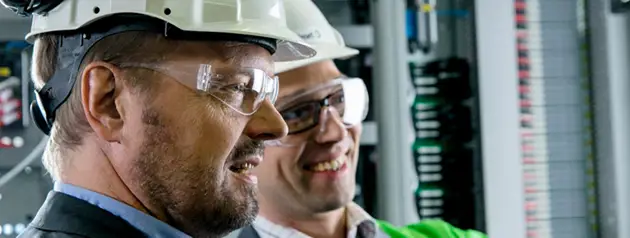Boiler combustion controls for waste-to-energy power plants
One of the main challenges with waste incineration is the wide variation in waste composition, including differences in some properties that have a significant effect on the incineration process. Because of these vast differences, incineration processes have been developed to cope with large variations in process conditions. Valmet’s improved process controls provides all necessary tools for more stable and efficient waste incineration.
Control solutions for all waste-to-energy power plant processes
Integrated combustion controls
Improved performance and cost savings with control solution for electrostatic precipitator
More detailed process information is required
To be able to control the incineration process, detailed process information is required. The design of the overall control system depends on the specific grate and furnace design of each supplier. Therefore, this section only provides an overview of potential process information, control philosophy and process interventions.
Process information and controlled variables may include
- Grate temperatures for various positions
- Waste layer thickness on the grate
- Pressure drop over the grate
- Furnace and flue gas temperatures at various positions
- Determination of temperature distribution over the grate surface by optic or infrared measurement systems
- CO, O2, CO2 and/or H2O measurements at various positions
- Steam production
Basic combustion controls normally include the following control actions
- A dosing system for the waste
- Frequencies and speed of grate movements in various parts of the grate
- Amount and distribution of primary air in the various grate compartments
- Temperature of the primary air, if preheating facilities are available
- Amount and distribution of secondary air in the furnace and, if available, of re-circulated flue gas
The improved process control has many potential advantages
- Better bottom ash quality – due to sufficient primary air distribution and better control of the incineration on the grate
- Less fly ash production – due to less variation in the amount of primary incineration air
- Better fly ash quality – less unburned material, due to more stable process conditions in the furnace
- Less CO and CxHx formation – due to more stable process conditions in the furnace; for example, the omission of cold spots
- Less NOx formation – due to more stable process conditions in the furnace, for example, the absence of hot spots
- Better utilization of the capacity – because the loss of thermal capacity from variations is reduced
- Better energy efficiency – because the average amount of incineration air is reduced
- Better boiler operation – as the temperature is more stable, there are fewer temperature peaks and thus less risk of corrosion and clogging fly ash formations
- Better operation of the flue gas treatment system – because the amount and the composition of the flue gases are more stable
- These advantages also result in less maintenance and better plant availability

Would you like to find out more about our boiler combustion controls?
Please let us know more about your needs – and our experts will contact you shortly.
Contact us